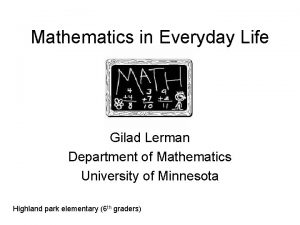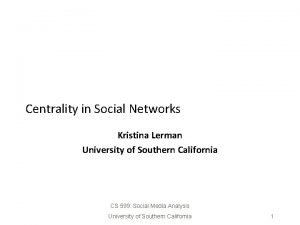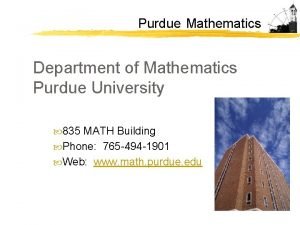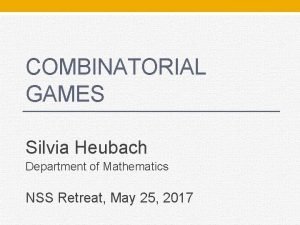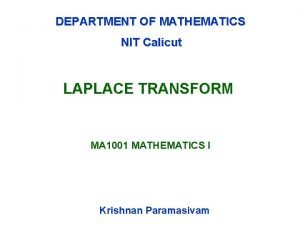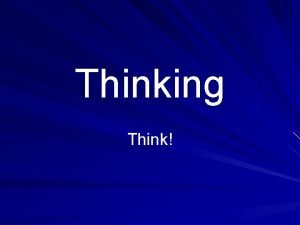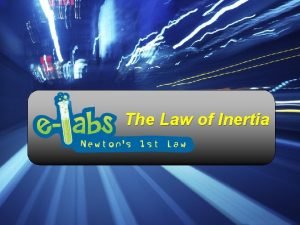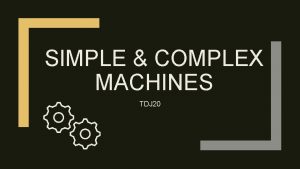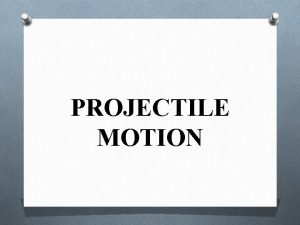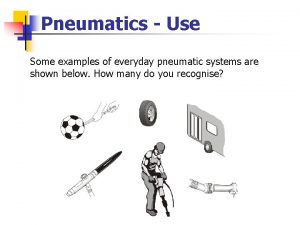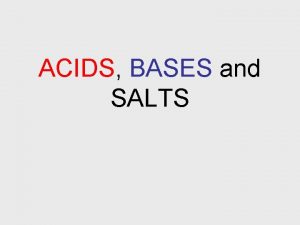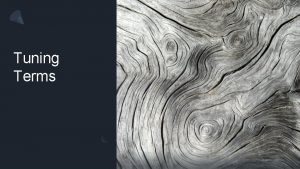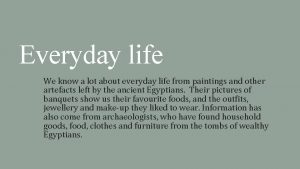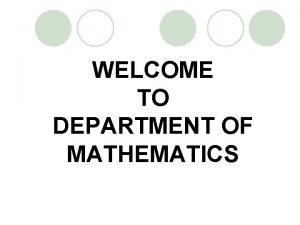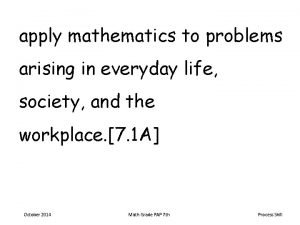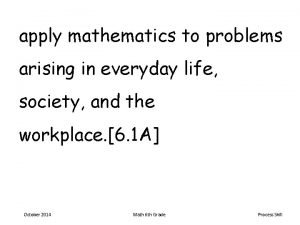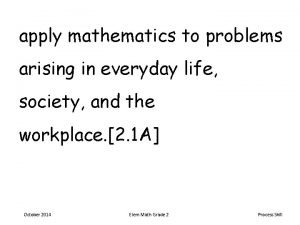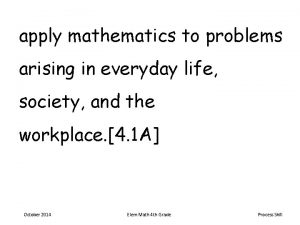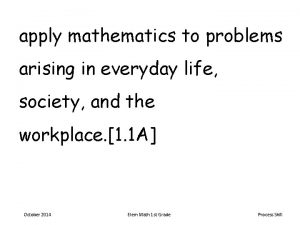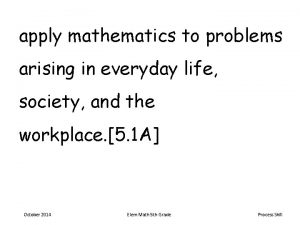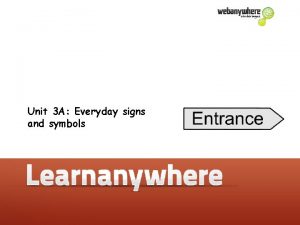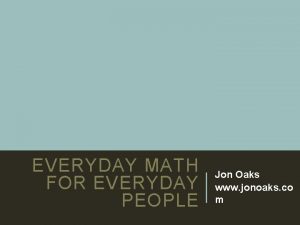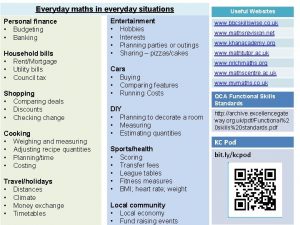Mathematics in Everyday Life Gilad Lerman Department of
























- Slides: 24

Mathematics in Everyday Life Gilad Lerman Department of Mathematics University of Minnesota Highland park elementary (6 th graders)

What homework do I give What do mathematicians do? my students? • Example of a recent homework: Denoising

What projects do I assign What do mathematicians do? my students? • Example of a recent project: Recognizing Panoramas • Panorama: wide view of a physical space • How to obtain a panorama?

How to obtain a panorama 1. By “rotating line camera” 2. Stitching together multiple images Your camera can do it this way… E. g. Photo. Stitch (Canon Power. Shot SD 600)

Experiment with Photo. Stitch Input: 10 images along a bridge Experiment done by Rebecca Szarkowski

Experiment continued… Output: Panorama (Photo. Stitch) Output: Panorama (by a more careful mathematical algorithm) Experiment done by Rebecca Szarkowski

New Topic: Relation of Imaging What’s math got to do with it? and Mathematics From visual images to numbers (or digital images)

Digital Image Acquisition

From Numbers to Images Let us type the following numbers 1 2 3 4 5 6 7 8 1 2 3 4 5 6 7 8 We then color them so 1=black, 8=white rest of colors are in between

One more time… Now we’ll try the following numbers 1 1 1 1 2 2 2 2 4 4 4 4 8 8 8 8 16 16 32 32 64 64 128 128 We then color them so 1=black, 128=white rest of colors are in between

Let’s compare 1 2 3 4 5 6 7 8 1 2 3 4 5 6 7 8 1 1 1 1 2 2 2 2 4 4 4 4 8 8 8 8 16 16 32 32 64 64 128 128

From an Image to Its Numbers We start with clown image It has 200*320 numbers I can’t show you all… Let’s zoom on eye (~40*50)

Image to Numbers (Continued) We’ll zoom on middle of eye image (10*10)

The Numbers (Continued) The middle of eye image (10*10) 80 81 80 80 77 77 81 80 80 80 73 77 70 80 81 80 80 80 79 77 70 54 70 80 80 80 77 70 22 37 22 80 80 77 66 22 2 1 2 80 80 80 77 77 54 57 2 6 2 77 77 37 66 77 66 51 22 2 6 77 37 11 66 80 77 70 37 8 8 37 11 9 6 2 11 66 54 77 80 66 54 51 70 37 22 2 6 8 6 Note the rule: Bright colors – high numbers Dark colors - low numbers

More Relation of Imaging and Math Averaging numbers smoothing images Idea of averaging: take an image Replace each point by average with its neighbors 80 81 80 80 77 77 81 80 80 80 73 77 70 80 81 80 80 80 79 77 70 54 70 For example, 2 has the neighborhood So replace 2 by 80 80 80 77 70 22 37 22 80 80 77 66 22 2 1 2 80 80 80 77 77 54 57 22 6 2 77 77 37 66 77 66 51 22 22 2 6 70 22 37 22 2 1 57 2 6 77 37 11 66 80 77 70 37 37 8 8 37 9 2 66 77 66 51 37 2 8 11 6 11 54 80 54 70 22 6 6

Example: Smoothing by averaging Original image on top left It is then averaged with neighbors of distances 3, 5, 19, 15, 35, 45

Example: Smoothing by averaging And removing wrinkles by both….

More Relation of Imaging and Math Differences of numbers sharpening images On left image of moon On right its edges (obtained by differences) We can add the two to get a sharpened version of the first

Moon sharpening (continued)

Real Life Applications • Many… • From a Minnesota based company… • Their main job: maintaining railroads • Main concern: Identify cracks in railroads, before too late…

How to detect damaged rails? • Traditionally… drive along the rail (very long) and inspect • Very easy to miss defects (falling asleep…) • New technology: getting pictures of rails

Millions of images then collected

How to detect Cracks? • Human observation… • Train a computer… • Recall that differences detect edges… Work done by Kyle Heuton (high school student at Saint Paul)

Summary • Math is useful (beyond the grocery store) • Images are composed of numbers • Good math ideas good image processing
 Gilad lerman
Gilad lerman Itamar gilad
Itamar gilad Lerman halo
Lerman halo Kristina lerman
Kristina lerman Louis lerman
Louis lerman Kristina lerman
Kristina lerman Kristina lerman
Kristina lerman Lerman non invasive halo
Lerman non invasive halo Office of academics and transformation
Office of academics and transformation Purdue math
Purdue math Department of mathematics
Department of mathematics Nit calicut mathematics department
Nit calicut mathematics department How do we use critical thinking in everyday life
How do we use critical thinking in everyday life Life inertia
Life inertia Examples of social interaction in everyday life
Examples of social interaction in everyday life Examples of complex machines used in everyday life
Examples of complex machines used in everyday life Projectile motion in everyday life
Projectile motion in everyday life Pneumatic equipment examples
Pneumatic equipment examples Cool physical changes
Cool physical changes Rhetoric examples in everyday life
Rhetoric examples in everyday life Examples of fractions in everyday life
Examples of fractions in everyday life Real life application of conic sections
Real life application of conic sections Chapter 6 section 1 price supply and demand together
Chapter 6 section 1 price supply and demand together Chemical reactions in everyday life
Chemical reactions in everyday life How to name bases
How to name bases
